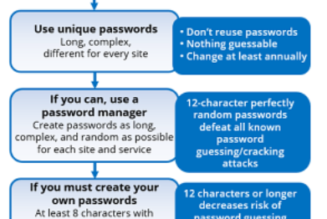South Africa’s healthcare organisations are currently on a journey to providing comprehensive and accessible healthcare services to all its citizens, in both the private and public healthcare ecosystems. However, the finalisation of legislation and standards that govern this sector has not been without challenges.
The aim is to ensure that South Africa’s healthcare organisations – like their counterparts across the globe – comply with legislations and adhere to standards that support the transformation of the healthcare ecosystem.
This through information and technology with various benchmarking and standards frameworks has resulted in the creation of the National Health Insurance (NHI) Bill, aimed at achieving specific strategic objectives in the delivery of healthcare. As an adjunct to this, technology plays a major role in enabling access to patient health records, portability, security and standardisation.
While the NHI is meant to deliver affordable personal health services for all South Africans in both the public and private sector, its finalisation has been hampered by several challenges, least of all being collaboration. We have seen very little collaboration between the private and public sectors, the National Department of Health (NDoH) and the public healthcare system.
/* custom css */
.tdi_3_6f5.td-a-rec-img{ text-align: left; }.tdi_3_6f5.td-a-rec-img img{ margin: 0 auto 0 0; }
The government has yet to set up the organisation or body that will ultimately oversee the successful implementation of the NHI. It, therefore, remains a challenge and it is not certain when we will see the finalisation of this initiative.
As a result, the Council for Scientific and Industrial Research (CSIR), in partnership with the NDoH and private healthcare providers have initiated the development of the National Health Normative Standards Framework (HNSF) for interoperability in e-health.
This will lay the foundation for the international standards and legislation that we will adopt in South Africa, such as Health Information Exchange (HIE), Institute of Electrical and Electronics Engineers (IEEE) – connectivity in healthcare, International Classification of Diseases (ICD), diagnosis-related group (DRG), Snomed and Logical Observation Identifiers Names and Codes (LOINC), among others.
These standards will ensure interoperability, govern on which platform medical devices should operate and set out how e-health strategies should be delivered. One of the key aspects of bringing international expertise to South Africa is to ensure that the technology enablement and roadmap of any facility that delivers healthcare services aspire to international best practice.
The HIMSS Electronic Medical Record Adoption Model (EMRAM) allows healthcare providers to assess their level of maturity by tracking their progress towards achieving a paperless patient record environment. Healthcare facilities are scored based on their level of electronic medical record (EMR) adoption from Stage 0 through Stage 7.
HIMSS EMRAM could be the “gold standard” globally for the digital transformation roadmap of any healthcare facility. This is what South African healthcare facilities should be striving towards. It provides a clear path and measures an EMR deployment’s impact on systems, providers and patients. A measurement such as this allows healthcare leaders to strategically prioritise their technology goals by comparing their progress to industry best practices.
The key to South African healthcare facilities attaining this standard in healthcare is that they must understand their current IT maturity and have a roadmap for digital transformation. At the same time, business imperatives must drive IT requirements, before a healthcare facility can establish its applications and infrastructure requirements. Furthermore, healthcare providers should align their business strategy with their business goals, processes and IT in addition to maintain the assets of their business and IT universe.
For countries looking to deploy healthcare service delivery in both private and public sectors, there is no better starting point than looking an international best-practice as a benchmark to measure against. The cost of development and research from scratch can be mitigated by using the many years of research and experience from well-established practices.
By Shiraaz Joosub, Healthcare Sales Executive for T-Systems South Africa
Edited by Luis Monzon
Follow Luis Monzon on Twitter
Follow IT News Africa on Twitter
/* custom css */
.tdi_4_1a7.td-a-rec-img{ text-align: left; }.tdi_4_1a7.td-a-rec-img img{ margin: 0 auto 0 0; }











